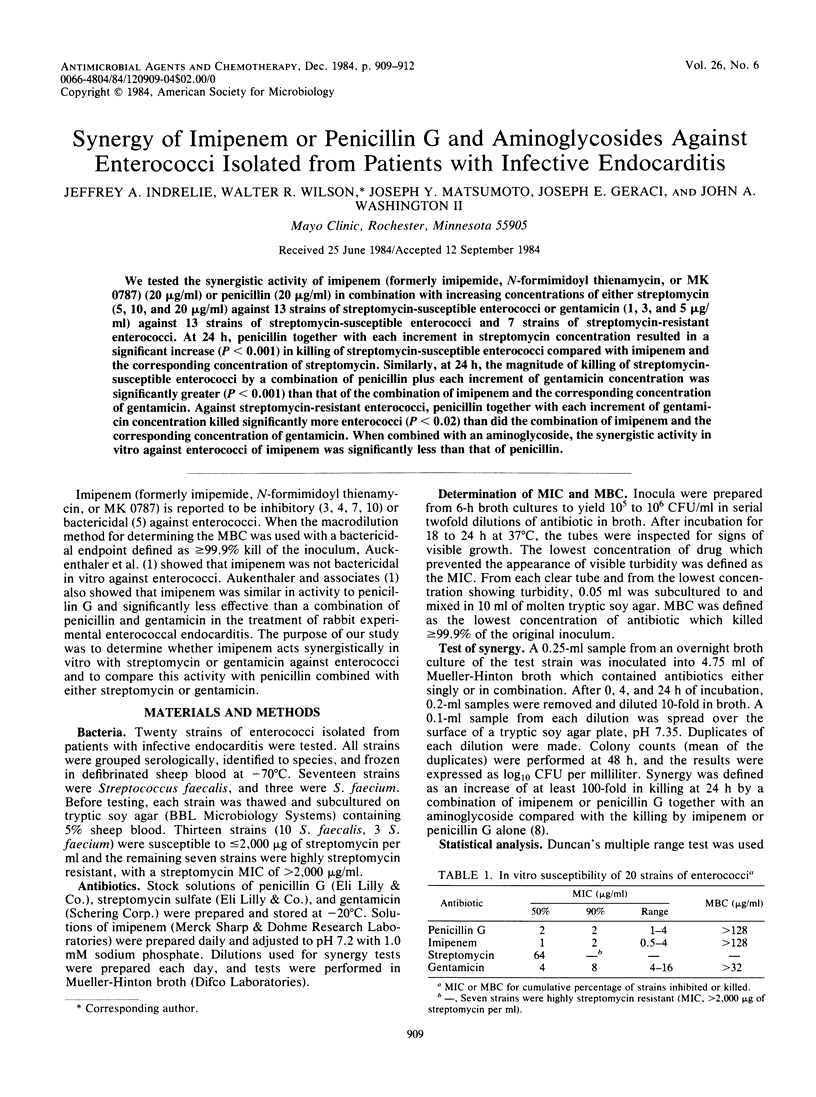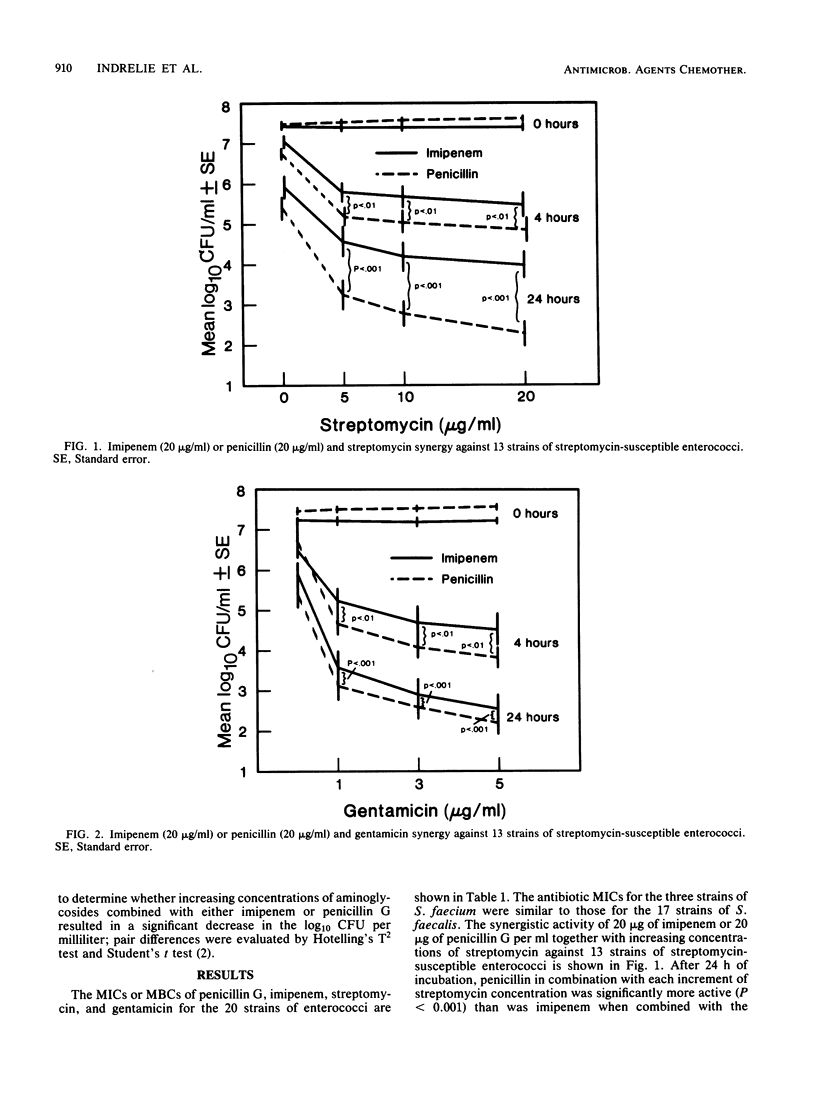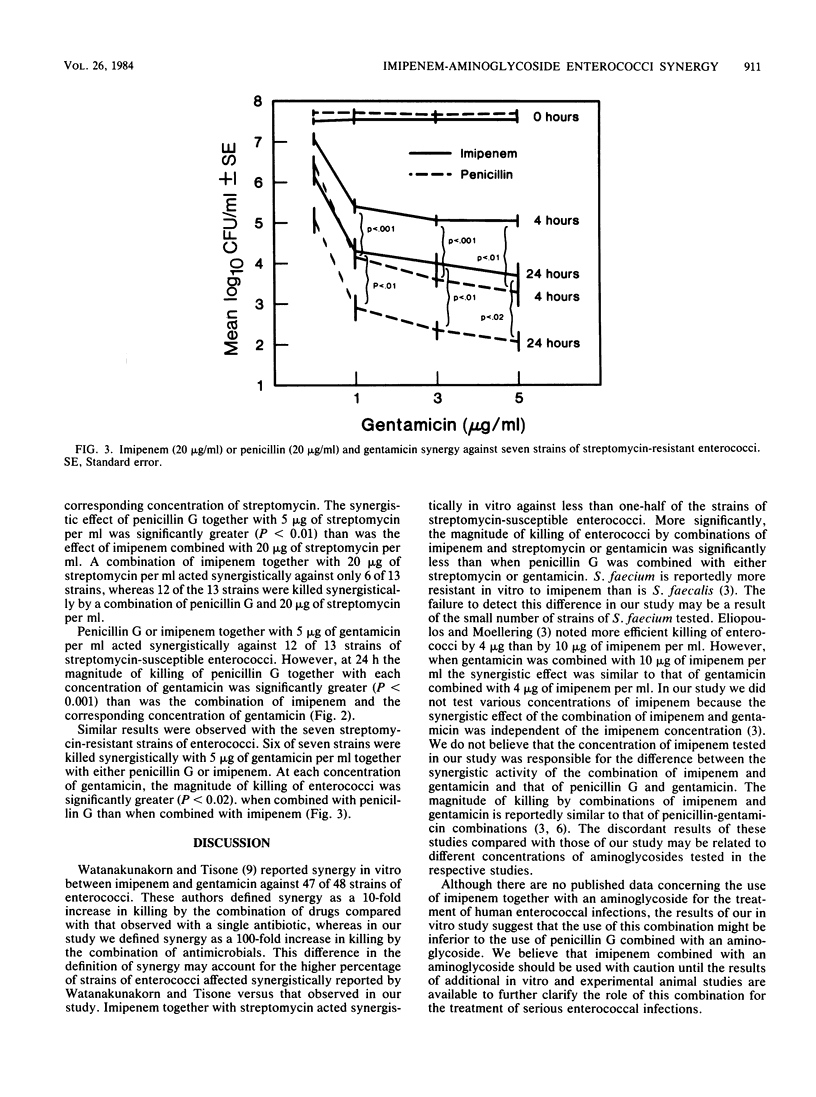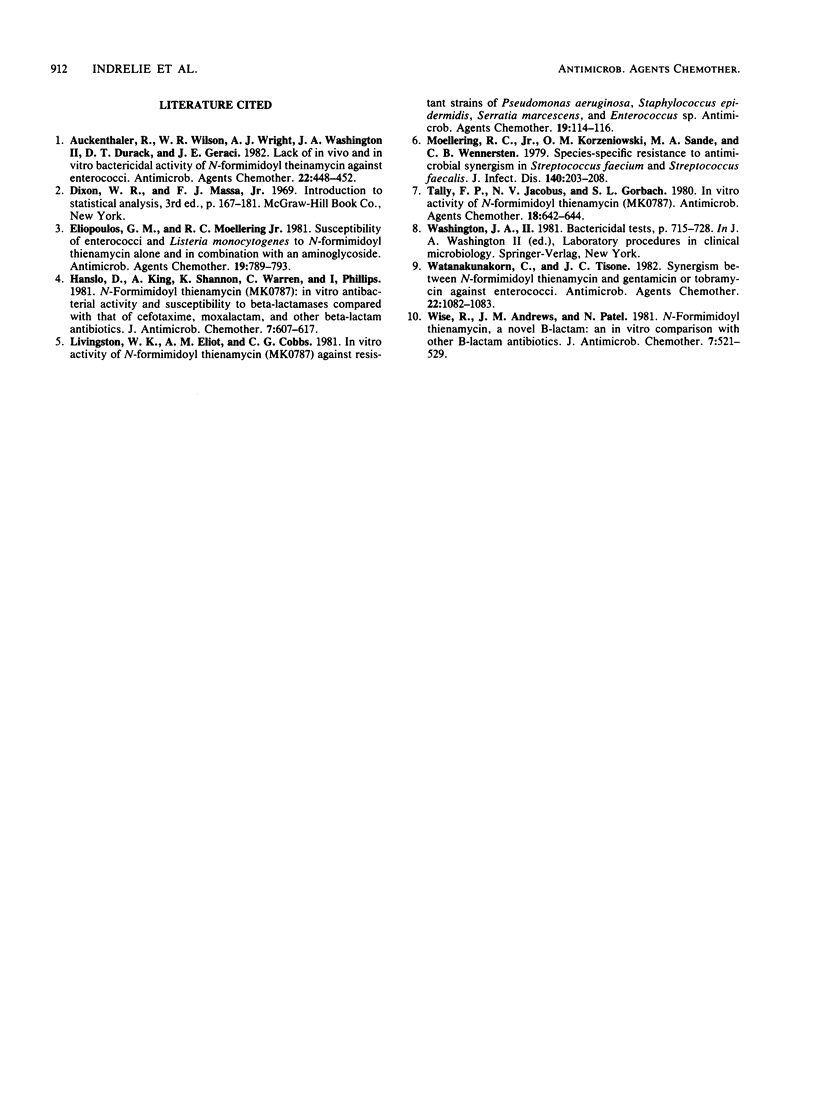Abstract
We tested the synergistic activity of imipenem (formerly imipemide, N-formimidoyl thienamycin, or MK 0787) (20 micrograms/ml) or penicillin (20 micrograms/ml) in combination with increasing concentrations of either streptomycin (5, 10, and 20 micrograms/ml) against 13 strains of streptomycin-susceptible enterococci or gentamicin (1, 3, and 5 micrograms/ml) against 13 strains of streptomycin-susceptible enterococci and 7 strains of streptomycin-resistant enterococci. At 24 h, penicillin together with each increment in streptomycin concentration resulted in a significant increase (P less than 0.001) in killing of streptomycin-susceptible enterococci compared with imipenem and the corresponding concentration of streptomycin. Similarly, at 24 h, the magnitude of killing of streptomycin-susceptible enterococci by a combination of penicillin plus each increment of gentamicin concentration was significantly greater (P less than 0.001) than that of the combination of imipenem and the corresponding concentration of gentamicin. Against streptomycin-resistant enterococci, penicillin together with each increment of gentamicin concentration killed significantly more enterococci (P less than 0.02) than did the combination of imipenem and the corresponding concentration of gentamicin. When combined with an aminoglycoside, the synergistic activity in vitro against enterococci of imipenem was significantly less than that of penicillin.
Full text
PDF



Selected References
These references are in PubMed. This may not be the complete list of references from this article.
- Auckenthaler R., Wilson W. R., Wright A. J., Washington J. A., 2nd, Durack D. T., Geraci J. E. Lack of in vivo and in vitro bactericidal activity of N-formimidoyl thienamycin against enterococci. Antimicrob Agents Chemother. 1982 Sep;22(3):448–452. doi: 10.1128/aac.22.3.448. [DOI] [PMC free article] [PubMed] [Google Scholar]
- Eliopoulos G. M., Moellering R. C., Jr Susceptibility of enterococci and Listeria monocytogenes to N-Formimidoyl thienamycin alone and in combination with an aminoglycoside. Antimicrob Agents Chemother. 1981 May;19(5):789–793. doi: 10.1128/aac.19.5.789. [DOI] [PMC free article] [PubMed] [Google Scholar]
- Hanslo D., King A., Shannon K., Warren C., Phillips I. N-Formimidoyl thienamycin (MK0787): in-vitro antibacterial activity and susceptibility to beta-lactamases compared with that of cefotaxime, moxalactam and other beta-lactam antibiotics. J Antimicrob Chemother. 1981 Jun;7(6):607–617. doi: 10.1093/jac/7.6.607. [DOI] [PubMed] [Google Scholar]
- Livingston W. K., Elliott A. M., Cobbs C. G. In vitro activity of N-formimidoyl thienamycin (MK0787) against resistant strains of Pseudomonas aeruginosa, Staphylococcus epidermidis, Serratia marcescens, and Enterococcus spp. Antimicrob Agents Chemother. 1981 Jan;19(1):114–116. doi: 10.1128/aac.19.1.114. [DOI] [PMC free article] [PubMed] [Google Scholar]
- Moellering R. C., Jr, Korzeniowski O. M., Sande M. A., Wennersten C. B. Species-specific resistance to antimocrobial synergism in Streptococcus faecium and Streptococcus faecalis. J Infect Dis. 1979 Aug;140(2):203–208. doi: 10.1093/infdis/140.2.203. [DOI] [PubMed] [Google Scholar]
- Tally F. P., Jacobus N. V., Gorbach S. L. In vitro activity of N-formimidoyl thienamycin (MK0787). Antimicrob Agents Chemother. 1980 Oct;18(4):642–644. doi: 10.1128/aac.18.4.642. [DOI] [PMC free article] [PubMed] [Google Scholar]
- Watanakunakorn C., Tisone J. C. Synergism between N-formimidoyl thienamycin and gentamicin or tobramycin against enterococci. Antimicrob Agents Chemother. 1982 Dec;22(6):1082–1083. doi: 10.1128/aac.22.6.1082. [DOI] [PMC free article] [PubMed] [Google Scholar]
- Wise R., Andrews J. M., Patel N. N-formimidoyl-thienamycin a novel beta-lactam: an in-vitro comparison with other beta-lactam antibiotics. J Antimicrob Chemother. 1981 May;7(5):521–529. doi: 10.1093/jac/7.5.521. [DOI] [PubMed] [Google Scholar]


